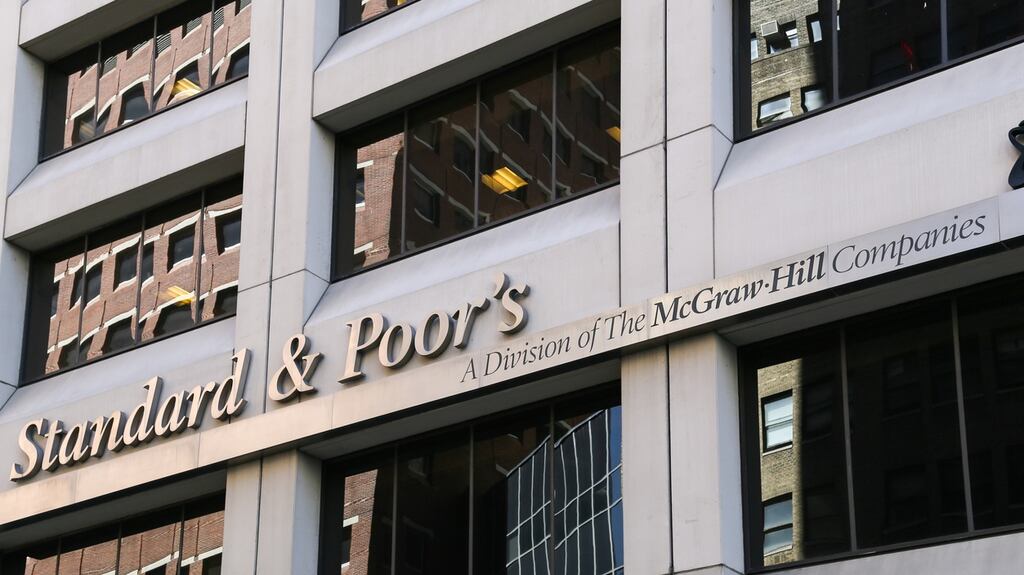Pressure will remain on Irish issuers of debt until the global economy can recover from the Covid-19 crisis, while it remains “uncertain” if investments and reforms at Irish banks will make a material difference to their performance, a report by credit ratings agency S&P Global concludes.
The second half of 2020 was “a period of relative stability” for Irish-issued debt, it found. Between July and December, S&P publicly rated 86 Irish-incorporated or headquartered debt issuers, downgrading four of them and upgrading one. This compared to three downgrades and six upgrades in the first half.
The percentage of issuers deemed to have a stable outlook increased marginally to 73 per cent.
“However, this is not a sign that risks seen in 2020 have receded, whether Covid-19-related or otherwise, as nearly one in four of all Irish-incorporated issuers currently have a negative outlook,” S&P cautioned. The picture was “starker” for individual sectors.
Corporates have borne the brunt of negative rating activity in Ireland, accounting for 70 per cent of Irish downgrades during 2020 and 62 per cent of all Irish issuers with a negative outlook.
However, the rating profile of the overall Irish corporate portfolio remains stronger than the overall average in the Europe, Middle East and Africa (EMEA) region, with most Irish issuers continuing to hold investment-grade status.
“Irish issuers are also diversified by industry, many of which have been less impacted by the pandemic. Therefore, while certain vulnerable sectors such as transport infrastructure could remain exposed to further rating actions, depending upon the shape of the recovery, other sectors such as healthcare and manufacturing should be less impacted,” the report notes.
Irish structured finance issuers, by contrast, have “exhibited a high level of rating stability”, while Irish financial institutions are “somewhere in between”, it said, with limited recent downgrades but a high level of negative outlooks, most notably among domestic banks.
“Most Irish domestic banks’ profitability is under increasing pressure due to compressing interest margins and a high cost base, and while most banks are investing significantly in business transformation and digital capability, it remains uncertain whether these initiatives will make a material difference to operating performance in the near term.”
Headwinds in 2021
Irish banks face “structural and cyclical headwinds” as they enter 2021, it added, with the sharp economic slowdown of last year having “taken a toll” on their operating environment.
S&P said the Government had launched “a sizeable fiscal response” to shield households and firms from a temporary but severe liquidity shock, and that the economy was well positioned for a strong recovery in 2021-2022.
The agency’s stable outlook on Irish sovereign debt reflects its view that the adverse effects of the pandemic “will be contained without lasting and structural damage to the country’s credit metrics”.
The ratings agency said risks related to Covid-19 were “not the only challenge” for Irish issuers, but the resolution of many of the negative outlooks and overall ratings performance during 2021 would likely depend on the global economic recovery, which in turn will be heavily influenced by the rollout and efficacy of vaccines.

















